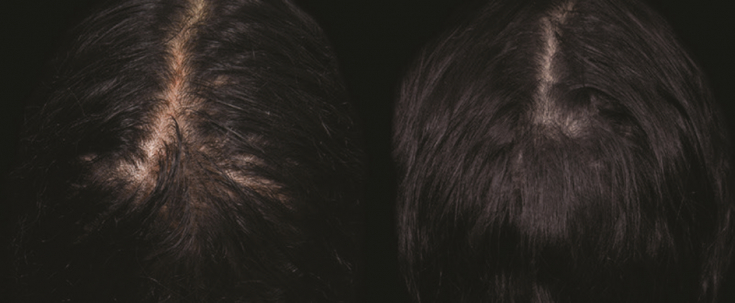Platelet-Rich Plasma is an autologous serum with a high concentration of growth factors and platelets. PRP therapy continues to develop as a treatment with application in dermatology for hair restoration, acne, post-acne and scars of various origins, elimination of stretch marks and restoration of lost volumes. In combination with laser technologies, microneedling, dermal fillers, plasma therapy leads to improved aesthetic results. Let's take a closer look at estet-portal.com Mechanisms of action of plasma therapy: growth factors
- Hair Restoration with PRP Therapy
- Acne and scarring as indications for PRP therapy
- Microneedling, laser and dermal fillers:
- combination with plasma therapy Mechanisms of action of plasma therapy: growth factors Platelet alpha granules are responsible for stimulation of regeneration
remodeling
of soft tissues. Many fundamentalgrowth factors are contained in PRP alpha granules (Platelet-rich Plasma): endothelial growth factor vessels, epithelial growth factor, transforming growth factor beta-1 and insulin-like growth factor. Mitogenesis and differentiation of monocytes, fibroblasts, stem cells, keratinocytes and endothelial cells occur as a result of exposure to platelet-rich plasma alpha granule growth factors. These growth factors also induce cell proliferation, angiogenesis and chemotaxis
and also containserotonin, dopamine, histamine, adenosine and calcium, which increase
>membrane permeability. #opros#
Follow us on Instagram!
Use ofPRP results in improved cosmetic results through angiogenesis, neocollagenesis and adipogenesis
.Hair restoration with PRP therapy PRP therapy shows promising results in the treatment of androgenetic alopecia.
Growth factors promote active hair growth by stimulating differentiation of hair follicle stem cells, inducing and prolonging the proliferative phase of the hair follicle anagen, as well as activating anti-apoptotic pathways and stimulating angiogenesis to enhance perifollicular vascularization.Both male and female pattern hair loss, as well as
alopecia areata
can be treated with plasma therapy.
Fig.1 Increased hair density after 6 monthly PRP injections.
PRP injections
may be combined withprogesterone. PRP administered with progesterone naturally inhibits 5-alpha reductase, the enzyme that converts testosterone to dihydrotestosterone
(DHT). DHT damages hair follicles and causes genetic hair loss.Read also: Clinical case: plasma therapy against hair loss
Progesterone inhibits5-alpha reductase and therefore DHT, which allows hair regrowth
.Acne and scarring as indications for PRP therapy Multiple studies indicate a significant improvement in the appearance of acne scars as well as traumatic scars
when using plasma therapy during treatment due to increased production ofcollagen
andelastic fibers, fibroblast proliferation. Read also: Effectiveness of plasma therapy in patients with acne
There has also been a reduction in erythema, edema, and tenderness after
Optical coherence tomography shows  decrease in depth of atrophic
decrease in depth of atrophic
Fractional laser resurfacing and
microneedlingtreatment creates micro-holes in the skin that improve the absorption and delivery of injected plasma.
Follow us on
Facebook!
Combining PRP with laser therapy and microneedling procedures
melanin index in the treated areas. Transepidermal water loss and post-inflammatory hyperpigmentation are also significantly reduced when PRP is combined with machine treatment. Patients treated with plasma therapy after fractional CO2 laser resurfacing or erbium laser
have improved skin elasticity and noticeably denser collagen fibers in the affected areas compared to areas treated withlaser without the addition of PRP . Read also: Plasma therapy and redermalization: skin rejuvenation Combination of
plasma therapy withhyaluronic acid dermal fillers is widespread: hyaluronic acid fillers serve as a scaffold to which PRP can bind and act soft tissue remodeling
.PRP continues to develop as a promising therapeutic method for the treatment of pathologies in dermatology. Growth factors contained in platelet-rich plasma promote neocollagenesis, angiogenesis, as well as stem cell proliferation and soft tissue remodeling. In the combination of plasma therapy with additional techniques, it is possible to correct aesthetic defects faster and more efficiently.
More interesting stuff on our YouTube channel:
Используете ли вы в своей практике PRP терапию?







Add a comment